
Contact

Home
Hoaxes & Pranks: Monster Hunters
SECRET RACE.
Morning Bulletin (Rockhampton, Qld.)
Date: July 4, 1923
Page Number: 7
"Mr. F. A. Mitchell-Hedges's astounding discoveries have filled up a gap in the history of civilisation," said Professor Elliot Smith, a graduate of the Sydney University, and one of the world's greatest authorities on anthropology, after inspecting the objects brought back from the hinterland of the Panama by Mr. Mitchell- Hedges, the explorer (says as exchange).
They include mummified remains 6000[?] years old belonging to the mysterious Chucunuque Indians.
The little room st Selfridge's (London), where the "finds" were carefully guarded, was the scene one afternoon recently of a conference which lasted more than an hour, between Professor Elliot Smith, Professor Oldfield Thomas, of the South Kensington Museum, and Mr. Mitchell-Hedges.
Profesor Elliot Smith agreed that these objects reopen all investigation into civilisation of thousands ol years ago. He was struck by the fact that the Chucunuque Indians had in late years adopted the elements of mediaeval Spanish customs, and also that, though they appear to have an abundance of pearls, they attach no importance to them.
"I am convinced," said Mr. Mitchell-Hedges, "that the embroideries which I have brought back are the history of the nation written on the clothes of the womenfolk, but, as the pictorial writing dates back so many thousands of years there is small hope of ever being able to read it.
"In a few months I Intend to return to this mysterious land and its unknown race, and shall bring back with me two natives of the people, who have never sees a white man before."
F. A. Mitchell-Hedges part 3



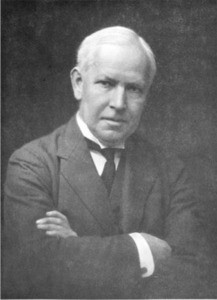
Sir Grafton Elliot Smith, FRS FRCP (15 August 1871 – 1 January 1937) was an Australian-British anatomist and a proponent of the hyperdiffusionist
view of prehistory.
The term 'hyperdiffusionism' seems to have been coined by the British archaeologist Glyn Daniel in his bookThe Idea of Prehistory (1962) with a somewhat derogatory intention. It was intended to represent extremes of diffusionism, a theme
popular in early 20th century archaeology that itself has been subject to criticism. Smith believed that all megalithic phenomena,
be it in Northwestern Europe, India, Japan or Mesoamerica, originated in ancient Egypt. "Small groups of people, moving mainly by
sea, settled at certain places and there made rude imitations of the Egyptian monuments of the Pyramid Age." (Smith 1911, ix). Smith
believed in a direct diffusion to Syria, Crete, East Africa, Southern Arabia and Sumer, while other areas were influenced by secondary
diffusion. The neolithic culture of Europe was derived from Egypt as well, according to Smith. The concept of hyperdiffusionism is
now referred to by more neutral terms (when referring to the Americas) such as Pre-Columbian trans-oceanic contact.

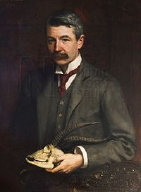

(Michael Rogers) Oldfield Thomas FRS (February 21, 1858 – June 16, 1929) was a British zoologist.
MONSTERS OF THE SEA.
The Daily News (Perth, WA)
Date: December 24, 1923
Page Number: 4
Mr. Mitchell-Hedges, of Falmouth, described his extraordinary battles with the giant fish of the ocean in a lecture to the British Sea Anglers' Society in London recently.
Mr. Hedges, who was introduced by Lord Desborough, president of the society, began by stating his belief that in the depths of the Pacifie terrible monsters, survivors of the mesozoic age, still exist. "I have found great sharks and rays weighing thousands of tons," he said, "and sea-scorpions, spiders, and sea-fleas two inches in length, which compel me to think that the monstrous life of millions of years ago still survives in the depths of the Carib- bean Sea."
Leviathans on the Line.
"In January, 1922," he went on, "a huge whale arrived in a harbor in Panama, and had to be killed with machine guns. It weighed 100 tons, and a huge steam crane could not lift it out of the water. In November, 1921, a beast was washed ashore at Cape May. It can beat be described as a sea-elephant, and weighed 50 tons, or five times the weight of a full grown elephant."
Mr. Hedges showed lantern slides of the great leviathans landed with rod and line. The greatest of these was a female swordfish weighing 5,700lb. This is believed to be the largest fish ever landed with a line. On examination, 36 embryonic swordfish were found in the womb. Other monsters ranging fvom 100lb. rays to 4,000lb. tiger sharks, were landed, and in many cases Mr. Hedges used a whole side of shark as bait. He also described a terrific battle royal between 15 huge sharks, which took place about 100 yards from the yacht in which every one of the monsters was believed to be killed.

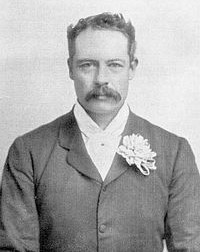

William Henry Grenfell, 1st Baron Desborough, KG, GCVO, (30 October 1855 – 9 January 1945) was an athlete, sportsman, public servant and politician.
The Argus (Melbourne, Vic.)
Date: January 19, 1924
Page Number: 8
Mr. F. A. Mitchell Hedeges, the explorer and deep seas research expert, sailed recently from Avonmouth in the s.s. Coronada for Jamaica where he will have his headquarters during another research expedition among the sea monsters of tropical waters. Mr Mitchell Hedges has been asked to make a close study of dolphins while another interesting but difficult task before him is the capture of a seo cow alive for the London Zoo, which has never possessed one. The Zoological Society has also asked him to bring back various specimens of live turtle and other curious marine creatures.

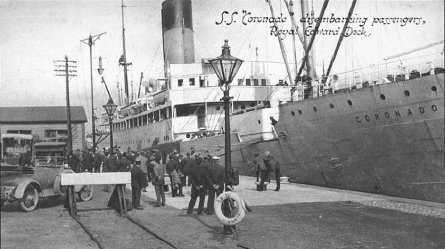
GIANT SEA FISH.
The Argus (Melbourne, Vic.)
Date: January 26, 1924
Page Number: 7
Anyone who thinks that the "Battles With Giant Fish," described by F. A. Mitchell Hedges, is but a fisherman's yarn, with more than the usual thrill will find the camera offering corroboration in almost every instance. In 1021 the author was given the opportunity of engaging in two years' deep sea exploration and so came in the way of big fish and fine adventure. Commencing at Jamaica, he fished many seas, but chiefly the Pacific Coast, south from San Francisco; the Caribbean seas, Jamaica, Panama, and those tropical waters which teem with strange things. He has more than an academic belief in the sea serpent because of the living evidence that in the depths of the ocean the life of the Mesozoic age still continues. Off Cape May in 1921 a great beast was washed ashore which weighed 15 tons roughly, resembled in elephant, but was as large as five full gtown elephants. It was seen by many scientists, none of whom could name it or cite any record of a similar creature being ever seen before. Once, when fishing off Manzanillo, in the Pacific, with a large hook, a steel chain, instead of a gut bottom, and a strong manila rope line, something look his bait and taking out all the line, snapped the rope as though it were pack thread. The largest shark—and he caught some enormous hammerheads, sawfish, and white sharks—would have been stopped by such tackle. So he thinks that in these depths water beasts of prey beyond imagination yet await discovery. Cristobel in 1922 a whale measuring about 100ft, and weighing probably 100 tons came into harbour, and was killed by guns lest it should block the canal, which it appeared to be anxious to explore. In his ordinary fishing, Mr Mitchell-Hedges has many fine experiences, told with a fisherman's zest and one cannot but admire the courage and keenness of Lady Richmond Brown, who was often with the fishing party, and whom the author feelingly describes in his dedication as "a damn'd good sportsman." His catches include a tarpon, estimated at 250lb., which fought for hours, and covered 12 miles in its rushes. Red schnapper were caught over a hundred pounds, barracouta, a regular sea wolf, up to 60lb., and his biggest catch on hook and line for one day was 6490lb., all sharks, 17 of them. It was that highest form of sport in which is constant risk and adventure.

This was a popular book in its day and was reprinted at least three times, which is unusual for any book on fishing - the title must
have helped. In a nutshell, you get just over 300 pages of total bloodbath, and I do not exaggerate, because there isn’t much rod
and line fishing in here and Mitchell Hedges used whatever method worked regardless of how unsubtle it might have been. At one time
he considered using explosives, but in the end he settled for capturing most of his fish using half inch hawsers and massive hooks
attached to ten foot chains loaded with up to 70 pounds of deadbait. Subtle, it ain’t and the pages are full of thousand pound sharks
being polished off with rifles and revolvers and when Mitchell Hedges got bored of that, he went and shot crocodiles just for the
fun of it. He even caught a porpoise.
Mitchell Hedges wasn’t a great writer and the endless slaughter does get a bit wearying - even
he must have realised the sheer pointlessness of it all, and quite how Lady Richmond Gordon, his companion, put up with it, I have
no idea. The vast majority of the catches were cut up and dumped back in the sea and if it wasn’t for the regular changes of location
the whole book would degenerate into something resembling the Texas Chainsaw Massacre. But, given that there are readers who enjoy
the TCM, this book does have an audience and I’ll concede, it is one of a kind, unless you count Scull's Lassoing Wild Animals in
Africa, which is equally improbable, but has no fishing in it at all. Quite why Mitchell Hedges kept at it for so long, I have no
idea, but I guarantee that you won’t read anything like it. Not recommended for catch and release anglers or readers of a nervous
disposition.

MONSTROUS LIFE IN DEEP WATERS.
The Advertiser (Adelaide, SA)
Date: January 26, 1924
Page Number: 21
Reviewing in the London "Daily News" a book just published, "Battles with Giants," by F. A. Mitchell Hedges (London, Bucksworth), Stuart Holgson writes:
Most people who think at all about it are apt to be rather fascinated by the monstrous life which goes on in the deep waters of distant seas. It is so old, for one thing: millions of years ago—long before man was so much as thought of—the immeasurably great-great-grandfathers of the savage creatures Mr. Mitchell Hedges describes were waging the same ferocious battles in exactly the same way as they do to-day. If an intelligent dinosaur could see some of these admirable photographs taken by Lady Richmond Brown it might recognise contemporaries, or at any rate things very like them.
Immense Antiquity.
There is something imposing in this immense antiquity. Then again the grotesqueness of the hideous shapes start on the imagination. No familiarity quite blunts the shock of surprise with which one sees, for instance, the face of a stingray. The brutes are armed with a poisoned dagger in the tail, which they curve suddenly over when attacking. If they pierce you, you curve over, too: you vomit black blood and die in agony in five or six minutes. Yet the faces of these awful creatures are like the facas of particularly silly old ladies: one would i:ot be surprised to see a nightcap on them.
It is clear from this one example that the author does not exaggerate when he claims for the hunting of these great fish the same romantic danger and much more difficulty than attends ordinary big game hunting. The most hairbreadth examples continually startle the reader. Perhaps the most sensational is that of Lady Brown from a wounded crocodile which rose under their boat:—
"Right beneath us the crocodile, which had only been wounded, rose, at the same time lashing us with its tail, flooding us with water—then came at us with mouth wide open! Its dripping jaws were within a foot of Lady Brown, who was sitting in the stern. The enraged brute, I thought, must surely seize her and over turn us.
"I could not fire—she was almost dead in line, and with the rocking of the boat it would have been madness to risk it. With remarkable presence of mind, without hesitating a second (if she had it would certainly have meant death for her), she whipped the automatic from her belt and fired three times into the gaping horrible mouth, and as it swirled away from the shock I snapped it with my rifle, and knew by the thud that I had got home. Lady Brown was as white as a sheet, and I was shaking as if with ague.''
A Moment of Horror.
But the story of her escape from a shark, as she was standing with her back to the sea in about nine inches of water examining something on the shore, is hardly as startling:—
"Right up onto the sand it swam, almost wriggling, while she remained totally oblivious of her danger. Simultaneously we roared with the utmost strength of our lungs:—
"Don't move! Look behind you—for God's sake don't step back!"
"The fear in our voices travelling across the water made her realise she was in mortal danger, and with wonderous presence of mind, without moving her body an inch, she turned her head. The entire dorsal fin and back of the big fish was out of the water, its waiting mouth could not have been more than three feet from where she was standing. Had she made one step backwards the consequences would have been too awful to contemplate, and the horror would have remained with us all our lives. As it was De Oasa[?] and I were actually sweating in an agony of fear, and it is impossible to describe how our pent-up feelings were relieved when we saw her advance calmly on to the dry beach.''
With all its brutalities and evil smells and unexpected ghastly dangers, what a surprising and wonderful world it is that Mr. Mitchell Hedges reveals, and what a guide. The nicest story in the book relates how he let a big turtle go because it sighed for its home and its children. I suppose Lord Birkenhead would call this story sloppy folly and sentimentalism; so apparently did the natives who wanted to eat the turtle: so certainly, I suppose, would the tiger shark and the other monsters of Mr. Mitchell Hedges' narrative. But the rest of us will sympathise with the turf: and even more with the humorous kindliness which let it go free because it sighed. This is the hallmark of the true naturalist.

BATTLES WITH GIANT FISH.
The Advertiser (Adelaide, SA)
Date: February 6, 1924
Page Number: 13
If an angler, in the course of a narration of his exploits, told you that he had had encounters with a hideous-looking monster that had a tail which ejected a death-dealing poison, with sharks and saw-fish larger by far than any of which you or anyone rise had ever heard, and that he knew of the existence of a sea creature "as big as five elephants," you would probably laugh at him and declare, "What tales these fishermen tell!" But if that same angler produced actual photographs of almost all these monsters, thus fully substantiating his claims, what would you say?
That the above is not an entirely supposititious happening has been shown by Mr. F. A. Mitchell Hedges, the well known deep-sea angler, who has returned from a long fishing expedition in the Pacific and Caribbean Seas with stories—and photographs—of giants of the ocean of which, up till now, even science has known little or nothing. "When asked if I believe in the existence of creatures almost past imagination in the depths of the ocean," Mr. Mitchell Hedges declares, "my answer is an unqualified 'yes.'"
Mr. Mitchell Hedges tells many thrilling stories of his encounters with these deep-sea leviathans in "Battles with Giant Fish" (Duckworth & Co.). With rod and line he caught numerous stringray—flat fish—of which he writes:—
"The is stingray is armed like its prototype, the leopard or whip-ray, with dagger in the tail, but this is a much more formidable weapon, fashioned of ivory about 9 in. to 12 in. long, and serrated down the edge like fishhook barbs. On coming into contact with any object the tail with the projecting dagger flashes round and, piercing the flesh of its victim, products a deep puncture into which a most virulent poison is transmitted.
The effect of this poison is as follows:— After being struck the victim it seized with violent spasms and muscular contraction; the body arches almost rigidly; black blood is vomited, and death en- sues within three to six minutes." Once, while standing in shallow water, Mr. Mitchell Hedges was stung by a tiny stingray, possibly 12 in. or 14 in. long. For a time he was practically paralysed down one side of his body, and it was thought he would have to have his leg amputated. It was three weeks before he could put his foot to the ground.
On another occasion the author caught a giant ray, and after a struggle lasting an hour, succeeded in getting it to the surface. He fired four shots into its head. It lay still, and he thought it was dead, but soon after it came violently to life again, almost upsetting the frail boat. There was only one thing to do, and the author, as opportunity occurred, plunged his knife time and again into the brute until at last it was dead. Some time later the author and his black man fought for the better part of a day with a huge whip-ray weighing 410 lb., and measuring 6 ft. 9 in. from head to base of tail.
Of his battles with huge sharks the author has much to say. Sharks often came close inshore and attack bathers. A little girl was standing in shallow water when a shark dashed in. The next thing the horrified onlookers knew was that her right leg had bean severed. On a different occasion, Lady Richmond Brown, who accompanied the expedition, was similarly attacked and escaped in the nick of time. Mr. Mitchell Hedges had the satisfaction of catching both these "tigers of the sea." In catching sharks in the Pacific, the author, who was on board a twenty-ton motor yacht, employed huge chunks of sand sharks (the smaller species), as bait, while his ''line" was Manila rope, and he had huge hooks with steel barbs.
One of the largest catches was a huge tiger shark, which, grasping the bait, dragged the yacht about as if it had been a cockle-shell. For hours the battle waged. It seemed impossible to tire the creature. Shot after shot was fired into it. At long last it was got ashore. It was 20 ft. 9 in. in length. 11 ft. 7 in. in girth, and it weighed 1,760 Ib.
A remarkable struggle was that with the greatest giant of all, a sawfish weighing 5,700 lb., and measuring 31 ft. in length. It was hooked early in the morning, and at 4 o'clock in the afternoon it was still fighting. One blow from the huge saw would have meant disaster to the yacht. The author, with two others, got into a dinghy the better to carry on the fight. The huge creature began to tow them out to sea, and then the small coat capsized and they were thrown into the water. How they were saved was a miracle; but they all got back into the yacht and carried the struggle to a victorious conclusion.
During his expedition Mr. Mitchell Hedges caught previously unheard-of monsters so far as size was concerned. In support of his belief that there are even greater giants lurking in the depths, he cites the case of the whale which, in January, 1922, entered the harbor of Cristobal, Panama. It attempted to pass through the canal locks, but was dispatched with machine guns. After it was killed it was towed by tugs to Cristobal Docks, and an endeavor was made to raise it from the water. Powerful 75-ton cranes and a rail- way engine were attached to it by steel cables, but its colossal size defied all efforts to lift it. It measured no less than 98 ft. in length, and was estimated to weigh nearly 100 tons. In the end the mammal was taken to sea and blown up by bombs dropped from aeroplanes.
In 1921, off Cape May, a mammal whose weight was estimated at over fifteen tons—almost as large as five fully grown elephants—was washed ashore. It was visited by many scientists, who declared that nothing yet known to science could in any way compare with it.

BATTLES WITH GIANT FISH.
The Queenslander (Brisbane, Qld.)
Date: February 16, 1924
Page Number: 2

A great night—that is the impression produced on one's mind by the lantern lecture on this subject which Mr. Mitchell-Hedges delivered
at the British Sea Anglers' headquarters on a recent evening (says the "Field")...
GIANT FISH.
The Queenslander (Brisbane, Qld.)
Date: April 12, 1924
Page Number: 3
Mr. F.A. Mitchell Hedges, a famous investigator of deep sea problems, tells with remarkable enthusiasm in "Battles with Giant Fish," some of his exciting experiences in the Pacific Ocean and the Caribbean Sea. The volume, which is published by Duckworth and Co., Ltd., is illustrated with 63 photographs taken by Lady Richmond Brown. Mr. Hedge's appears to have had many thrilling adventures with sea monsters, but his statement that all big game shooting in comparison with what he did is "mere child's play" is hardly acceptable. Mr. Hedges is certainly enthusiastic, too, in believing that the sea still contains the monsters of the Mesozoic age. The fish that he fought and captured were big, but they were nothing like the giants of old. A little enthusiasm, however, never detracts from the interest of the narrative.

FISHING FOR "SEA-COWS."
Coral Island Quest.
The Advertiser (Adelaide, SA)
Date: May 10, 1924
Page Number: 20
Writing from Belize, British Honduras, on February 20, to the London "Daily Mail," Mr. F. A. Mitchell-Hedges, the explorer, states:—
I have now faulted investigating the waters in the vicinity of Jamaica. The last time my nets were laid for sea-cows (manatis) proved a disappointment, as must always be expected in work of this kind. The two nets, nearly a mile in length, were stretched at Fort Charles Bay (a remote spot near Pedro Bluff, in the Caribbean Sea). They were set in the evening and early next morning we proceeded to examine them. A remarkable sight met oue eyes—close to the net were eight sea-cows wallowing lazily, while the floating corks were all bundled together in a heap on the surface. When the tangled mass was got ashore we found the mesh rent and torn from end to end—at least three sea-cows must have been enmeshed, with disastrous consequences to the nets. I examined the sea in the neighborhood, wondering why these extraordinary creatures seemed to congregate here, and discovered a subterranean river emptied itself into the sea, forming a pool of fresh water in the actual sea. U.S. Enterprise. Having received a cable from British Honduras containing remarkable information, we changed the whole of our plans and decided to sail for Belize, where we arrived on February 17. I have here been given the most remarkable data which has hithreto come within my knowledge. I am leaving to-morrow for a virtually unknown coral island situated off the coast of Guatemala. It can safely be predicted that we are on the verge of a discovery of the greatest scientific importance. The American expeditions in this part of the world, backed by millions of money, are making tremendous strides, and gathering specimens and data for their museums which are of the greatest importance. One has evidences on every side of how trade and commerce are being opened up by the great business men of the United States. In this little known colony there are millions of acres awaiting development, and many opportunities for the pioneer.

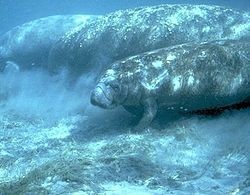

Sea-cow or Manatee
ANCIENT AMERICA
CIVILISATION OF DEAD RACE
ARCHAEOLOGICAL DISCOVERIES
Northern Star (Lismore, NSW)
Date: July 8, 1924
Page Number: 7
Further deails regarding the ruins of the vast Maya city, in the heart of British Honduras, the discovery of which by Mr. F. Mitchell Hedges, the explorer, and Dr. T. W. F. Gann, the archaeologist, were supplied by Dr. Gann, on his arrival in London. Lady (Richmond) Brown accompanied the party.
Dr. Gann, who is an authority of Honduras antiquities, said "The ruins are relics of the oldest and highest civilisation on the American Continent. Two thousand years ago Maya was equal to any civilisation in the world.
"Intelligent people lived communal lives in the city, fished communally, hunted communally, farmed communally, and lived generally almost on the 'pool' basis.
OVERGROWN WITH BUSH
"To-day, in the thick bush, are the descendants of these civilised beings, a primitive people, superstitious, without tradition (or dead to them), decadent victims of a gradual retrogression that began about the 6th century, when wars and human sacrifices became their afflictions.
"This city that we discovered undoubtedly antedates Chichen Itza (another Maya city) by nearly 1000 years, and although we must yet burn away the thick bush that grows over the ruins, our further investigations will probably show that it was bigger than that city of about 250,000 population.
"In this oldest American civilisation these great builders, strongly Mongolian in type, of black hair, short stature, muscular and extremely, intelligent, built the great pyramids the ruins of which we have found.
STONE PYRAMIDS
"Picture that city. It consisted of a great number of stone pyramids spread over an area of from five to ten square miles. Stone staircases led to their summits, on which were the palaces of the kings and high priests, and temples of the gods.
"Round the pyramids was the city proper. Here, in wooden houses thatched with palm, lived the common people, who did beautiful gold work, exquisite jade carvings, and had a considerable knowledge of astronomy among other things.
"Their calendar system dated back to about 3250 years B.C., and the time was measured by :—
Cycles of 400 years.
Katuns of 20 years.
Tuns of one year (360 days).
Unials of 20 days, and
Kins or days.
"Objects have been found with which the people played games, but we cannot make out what their games were."

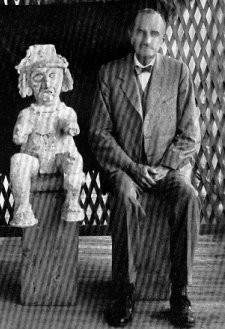

c 1920s
Thomas William Francis Gann (13 May 1867 – 24 February 1938) was a medical doctor by profession, but is best remembered for his work as an amateur archaeologist exploring ruins of the Maya civilization.
‘Destructive, … notorious, … telling tall tales’ – Gann in Retrospect
It is clear from these histories that Gann, when working in the 1920s and 1930s, and in the absence of other serious local interest until quite later on, was very much out of step with contemporary archaeological field methods and ethics. Thus one can conceivably write of ‘two’ Ganns: one reporting his discoveries in learned journals to reasonable contemporary standards (1890s–1910s) and the other (1920s–1930s) giving in to a ‘predilection for telling tall tales’




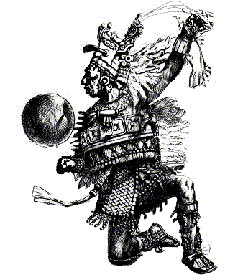

CONTENTS































